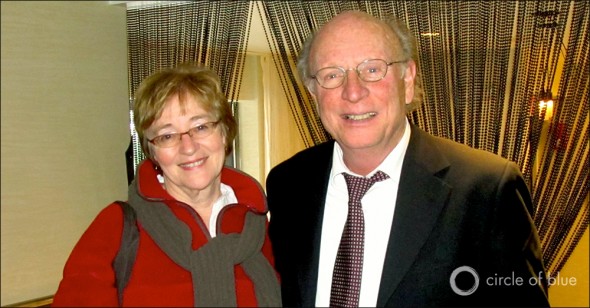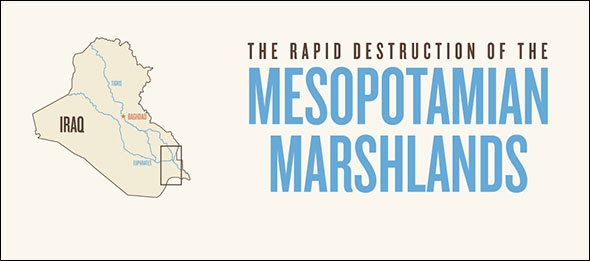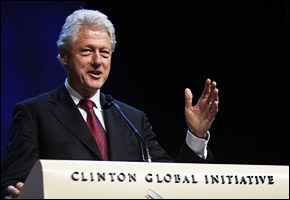Water Law: Public Trust May Be Fresh Approach to Protecting Great Lakes
Canadian and American advocates join to promote big oversight idea of the “commons.”
By Keith Schneider
Circle of Blue
WASHINGTON, D.C. — Maude Barlow, a 64-year-old author and activist from Ottawa, is chairperson of the Council of Canadians, one of that country’s most influential public interest organizations. She has spent a globally prominent career advocating for clean water, environmental protection, and fairer trade deals for the Great Lakes region.
James Olson, a 66-year-old attorney from Traverse City, Michigan, is an expert in American environmental law who challenged Nestle’s authority to bottle Michigan’s groundwater in a 2003 case that spurred an eight-state pact in 2008 to block big diversions of water from the Great Lakes.
Now the two advocates, driven by their shared allegiance to the security of the Great Lakes, have teamed up to develop and promote the biggest idea of their careers. They are intent on applying two ancient governing and legal principles — defining the Great Lakes as a shared “commons,” protected by the public trust doctrine — to reverse the deteriorating condition of the largest system of fresh surface water on earth.
On December 13, Barlow and Olson took a momentous first step toward their goal when they spent 75 minutes formally introducing the concept to the Canadian and American leaders of the International Joint Commission (IJC), a bilateral agency founded in 1909 to help manage the Great Lakes and other waters that cross the boundaries of the two countries. It was the first time that a framework for managing the Great Lakes as a commons had been presented at such a high government level in both nations.
Journalists were barred from the conversation. But when the locked door to the private meeting swung open, Barlow and Olson swept through smiling and in high spirits.
— Paul Simmons, Water Law Specialist
Somach, Simmons, & Dunn
“It couldn’t have gone better,” Olson said. “They understand the gravity of the systemic threats to the Great Lakes and inhabitants and that a new approach is needed. They were engaged and asked a lot of questions.”
“We were asking the IJC to show leadership, by promoting a new narrative for protecting the Great Lakes,” Barlow added. “They were gracious, warm, and receptive. There was no hostility and a great deal of interest in how it would work.”
Frank Bevacqua, the IJC spokesman, said the commissioners would not comment publicly on what they heard. “Our commissioners wish to have the opportunity to discuss the material presented by Barlow and Olson amongst themselves, before giving interviews on the subject,” he said.
The proposal from Barlow and Olson also attracted interest from water law experts outside of government. Paul Simmons — a water law specialist and partner at Somach, Simmons, and Dunn in Sacramento — said in an interview with Circle of Blue that, since a 1983 state Supreme Court case, California has required water suppliers and regulators to consider the public trust implications in decisions involving water allocations from rivers for such things as supplying drinking water or for wildlife conservation.
The biggest question in defining the Great Lakes as a commons subject to public trust principles is how to install such principles in real-world law and regulation, according to Simmons.
“How can something be operationalized,” he said. “In California, the Supreme Court told us to do it. How that plays in the Great Lakes, I’m not sure. There’s no Supreme Court of the Great Lakes.”
The Dynamic Duo
Barlow and Olson understand the complexity of actually installing public trust principles to manage the five lakes and a drainage basin that encompasses two nations. The first challenge, they said, is to get traction for the idea. In that realm, Barlow and Olson have strong records.
In 2010, in large part due to Barlow’s knowledge and advocacy, the United Nations General Assembly broke through decades of reluctance and inertia and approved Resolution 64/292, which “recognizes the right to safe and clean drinking water and sanitation as a human right that is essential for the full enjoyment of life and all human rights.”
Olson, meanwhile, is such a revered figure in the Midwest legal community that he was awarded the State Bar of Michigan’s Champion of Justice Award last year. He also leads a new water public trust policy center, Flow for Water, in the Great Lakes region.
— James Olson, Water Law Specialist
Olson, Bzdok, & Howard
Depending on whose perspective is being tapped, Barlow and Olson are either Bonnie and Clyde firing away at industrial expansion and pollution, or Fred and Ginger gracefully choreographing a plausible new strategy for safeguarding Great Lakes resources.
Plainly, the two prefer the latter.
Soft spoken and self-effacing, Barlow and Olson have set out to convince public and elected leaders that the environmental, public health, and conservation oversight mechanisms for the Great Lakes — developed at the end of the 19th century and refined in the latter decades of the 20th century — need a drastic update for the 21st century.
“There really is no doubt that the approach to solving big problems in the Great Lakes has to fit the times, and it doesn’t right now,” Olson said. “Governments are scrambling to make fixes. It’s not working. The condition of the lakes is deteriorating, and we seem helpless to do much about it.”
Ancient Principles Applied To Present Dangers
The major overhaul that is needed, the two say, would elevate two of the oldest governing and legal principles known to mankind.
The first is the concept of the “commons,” the conviction held by societies, stretching back thousands of years, that a select group of resources — air, water, hunting grounds, rivers, oceans, lakes — are so vital that they are community assets to be collectively protected and shared.
Once a resource attains such high value, explained Barlow, securing its vitality emerges as a basic human right, like liberty. “It’s a transformation of the head and heart,” she said.
“There are better answers to the crises we face,” she went on. “We can change patterns of over-consumption. We can have better protections for our water and environment, and we can move to sustainable energy resources. We must move to a model that puts the commons — the land we live on, the air we breathe, and the water we need to live — at the forefront.”
Establishing such values into a legal framework that regulators can apply to public and commercial practices, and that enables agencies and courts to make decisions in disagreements, is where Olson fits in.
Olson was a 25-year-old law school student in 1970, when Joseph Sax, a professor at the University of Michigan Law School, published a blockbuster article in the Michigan Law Review. Sax argued that “of all the concepts known to American law, only the public trust doctrine seems to have the breadth and substantive content which might make it useful as a tool of general application for citizens seeking to develop a comprehensive legal approach to resource management problems.”
In the decades since, Olson has steadfastly studied the doctrine and developed careful ideas about how the principles of public trust can attain what Sax called “some concept of a legal right in the general public” yet can be made enforceable against the government and violators and be both strict enough and sufficiently flexible to evolve with contemporary concerns.
Barlow outlined the basic concept in a report, A Great Lakes Commons: A Plan to Protect the Great Lakes Forever, that the Council of Canadians published late last year. She and Olson are calling on the IJC to embrace the report’s findings and to lead a two-nation campaign to formally and legally declare the Great Lakes a shared commons, protected by public trust principles. They also asked the agency to work with the national legislatures and regulatory agencies to install public trust principles in new and existing environmental protection and resource conservation statutes.
In essence, Barlow and Olson have set out to push both nations past the “look before you leap” approach — consistent with current water and environmental statutes — to an updated “look and only leap if it’s safe” concept for managing shared resources and public health.
The new concept is game changing. Modern water and environmental regulation, developed in the 1970s and 1980s, are aimed at limiting damage from industrial enterprises. They determine how much bad stuff a plant or city or car or truck can put in the air and water. Essentially, the American Clean Water Act, Clean Air Act, and various statutes on hazardous waste (along with their Canadian equivalents, like the Fisheries Act), still permit pollution, albeit at a much lower level had the laws never been enacted.
The combined commons and public trust approach would push the management of water, other resources, and the environment to a new, broader, and potentially simpler format.
The two concepts do not ask, as do current statutes, what emissions limits are needed at a specific plant to protect a specific lake or community. Instead, the concepts would formally acknowledge the historical commons and the public trust framework for ecologically significant regions — like the entire Great Lakes Basin — protecting that shared, common region from harm done by any one industry or special interest..
In other words, if a city or industry cannot develop modern practices that would not threaten a region or resource, it would not be granted the authority to operate.

Needless to say, the boldness and the degree of difficulty for this mission are enormous.
National legislatures in both countries are working to weaken environmental and public health statutes. Deficits are draining the vitality and will of regulators, while global economic distress is putting enormous pressure on governments to accelerate enormous, nonconventional projects, such as the tar sands oil development in Alberta, Canada, and the production of shale gas and oil in Pennsylvania, Ohio, and New York.
“Multipoint pollution, climate change, over-extraction, invasive species, and wetland loss are all taking their toll on the watershed that provides life and livelihood to more than 40 million people and thousands of species that live around it,” Barlow wrote in her new report, arguing that the urgency to adopt a fresh and effective way to protect the Great Lakes is higher than it has been in two generations. “Once thought to be immune from the water crisis that threatens other parts of the world, the Great Lakes are a source of increasing concern, as residents watch their shorelines recede, their beaches close, and their fisheries decline. Added to this mounting ecological crisis are growing conflicts, as some eye these precious waters for commercial bulk and bottled water export; mining, oil, and gas exploration; private control of once public water services; and as an incentive to lure water-intensive industries to locate on them.”
Examples of Public Trust in Action
Though it sounds like a mouthful, Canada and the United States have long recognized and applied the principles of the commons and the public trust to managing a select number of specific shared resources and institutions. National parks in both nations, for instance, are regarded as commons. Rivers and the bottomlands of oceans and the Great Lakes are viewed culturally and legally as public commons, protected in statute by public trust principles. In 2005, the Michigan Supreme Court unanimously overturned a lower court decision and ruled that every citizen has the right to walk on Great Lakes beaches, a public commons.
Environmental advocates are applying commons and public trust principles to address the threat from global climate change. Last May, lawyers seeking stringent curbs on greenhouse gas emissions sued the U.S. federal government, arguing that it had failed to protect the earth’s atmosphere as a public trust that should be guarded for future generations.
— Maude Barlow, Chairperson
Council of Canadians
Social Security in the United States and the Internet globally are steadily attaining stature as public commons, to be secured by the public trust. The safety of these commons is vigorously defended, and potential threats meet powerful public counter attacks.
“This is a change from the free-for-all that’s evolved in current law,” Olson said. “Regulation is so heavily influenced by politics. That’s one of the primary reasons that the Great Lakes are in trouble from toxics or exotic species or global warming: our statutes aren’t keeping up with the threats, and our will to enforce what we have is weakening.
“What we’re talking about is an alternative,” Barlow said, “a well-managed, time-tested set of principles, applied to the big problems of this century.”
Water: A Useful Place To Start
Applying both principles to water is a good starting point. Since the Roman era began more than 2,000 years ago, water has traditionally been subject to community management.
The English monarchy added strength and recognition to the public trust doctrine with the signing of the Magna Carta in 1215. English common law in the 17th century — and later embraced in American colonial law — reinforced the public trust concept that government has a duty to administer, protect, manage, and conserve fish, wildlife, and marine resources.
Over the last two centuries, the U.S. Congress and the Supreme Court have defined the responsibilities of government under the public trust doctrine. In 1892, for instance, the Supreme Court declared the Great Lakes a public trust and barred the state of Illinois from selling nearly 2.5 square kilometers (one square mile) of Lake Michigan to a private railroad company. In 1918, Congress passed legislation to protect migratory birds as a public trust, a duty upheld by the Supreme Court.
State supreme courts in California, New York, Wisconsin, and Vermont, among others, also have consistently upheld the state’s authority to protect wildlife, marine resources, and waterways as a commons secured by the public trust. Last July, in a case involving the transfer of shoreline along the Colorado River near Laughlin, the Nevada Supreme Court issued a decision formally adopting the public trust doctrine as Nevada law. The dispute occurred around a state land official’s refusal to transfer 130 hectares (330 acres) of river shoreline to a county, arguing that it should be overseen by the state as a commons and that it was subject to the public trust. The state’s high court agreed in Lawrence v. Clark County.
Eric Garner, an attorney in Los Angeles and author of California Water, told Circle of Blue that the clearest path to determining whether the Great Lakes are a commons subject to public trust principles is to “gain agreement from jurisdictions on whether public trust law applies to the Great Lakes Basin.”
He added that there are “a lot of different viewpoints on whether it should, which makes an agreement doubtful.” The most likely solution, Garner suggested, is to do what lawyers do — develop cases that test the application of the commons and public trust to the Great Lakes and ask questions that are expansive enough to find their way through the courts of both countries.
“Public trust is not statutory,” Garner said. “It resides in the common law and is applied by courts.”
Do you have a Water Law story suggestion? Are you an attorney, law student, or journalist and want to write for Water Law? Want to learn how you can become a Water Law sponsor? Email us at waterlaw@circleofblue.org and follow our new @WaterLaws account on Twitter.
Circle of Blue’s senior editor and chief correspondent based in Traverse City, Michigan. He has reported on the contest for energy, food, and water in the era of climate change from six continents. Contact
Keith Schneider









YAWN. The public trust doctrine is a stale, old approach and was rejected in the Michigan case. As long as you are willing to compensate the present owners of the water rights (which would be extremely costly) I suppose you can do it.
The sad part of all this what is happening to all open waters in the world is caused by a faulty applied water pollution test (BOD or Biochemical Oxygen Demand) developed around 1920 in England. This test measures the oxygen demand when bacteria break down organic matter and to break down both fecal and urine matter will take at least 30 days. Since the break down of nitrogenous (urine and protein) matter is slow and initial not enough bacteria breaking down this waste are not sufficiently available, it was assumed that the 5-day reading (BOD5) solely represented part of the demand caused by bacteria using the carbonaceous (fecal) matter and since the oxygen demand caused by those bacteria breaking down the nitrogenous sources could be calculated by using another nitrogen test, one did not have to wait 30 days, but could calculate the total BOD with using the BOD5 reading of the test and the nitrogen test. The BOD5 test reading represents only 40% of the oxygen used by bacteria to break down the organic matter in sewage.
Even tough all this is well described in the technical literature, it became common to use only the 5-day reading of the test and many countries when they passed legislation, regulations again only used the 5-day test reading, not realizing that not only 60% of the oxygen exertion pollution was ignored, but all the pollution caused by nitrogenous (urine and protein) waste, while this waste besides exerting an oxygen demand also is a fertilizer for algae and thus contributes to eutrophication now often resulting in dead zones and red tides.
That the 5 day reading of the test only represented the oxygen used by bacteria breaking down carbonaceous waste, may be valid in some cases when the raw sewage is very fresh (as it probably was when the test was developed in 1920), but the bacteria breaking down nitrogenous matter are plenty full present in nature and this immediately caused problems in EPA’s regulatory program as many sewage treatment plants could not meet the set standards for their permits and violated their permits because most of the 5-day test reading was caused by those bacteria breaking down nitrogenous waste, which was not considered a pollution under the regulations. Sewage treatment plants were actually penalized for treating their sewage better as was required by their permits.
EPA in 1984 acknowledged the problems, but in stead of correcting the test, it allowed the addition of a special chemical to the test, that only kills those bacteria that break down nitrogenous waste and thus do not need any oxygen any longer. It was estimated that 60% of all the sewage treatment pants violating their permits, got into appliance by adding this chemical. Later in 1987 EPA of the record admitted that the test and the regulations should be corrected, but at the same time claimed that this would be impossible as it would require a re-education and re-tooling of an entire industry.(www.petermaier.net)
All this, while EPA already in 1978 acknowledged in one of their reports that not only much better sewage treatment (including nitrogenous waste) was available, but also could be build and operated at much lower cost.
Since we still do not know how sewage is treated and what the effluent waste load is on receiving water bodies, it is essential, before any other new regulation, that we correct this essential test, otherwise we just keep wasting time and money.
I’m now the founding chairman of the United Skilled Plumbers Association in the Philippines. We want to fight any corporate ownership of all common waters: the rivers, springs, lakes, oceans, and the water distict system in the Philippines that are for privatization program, in favor of the private corporations. We need your help.